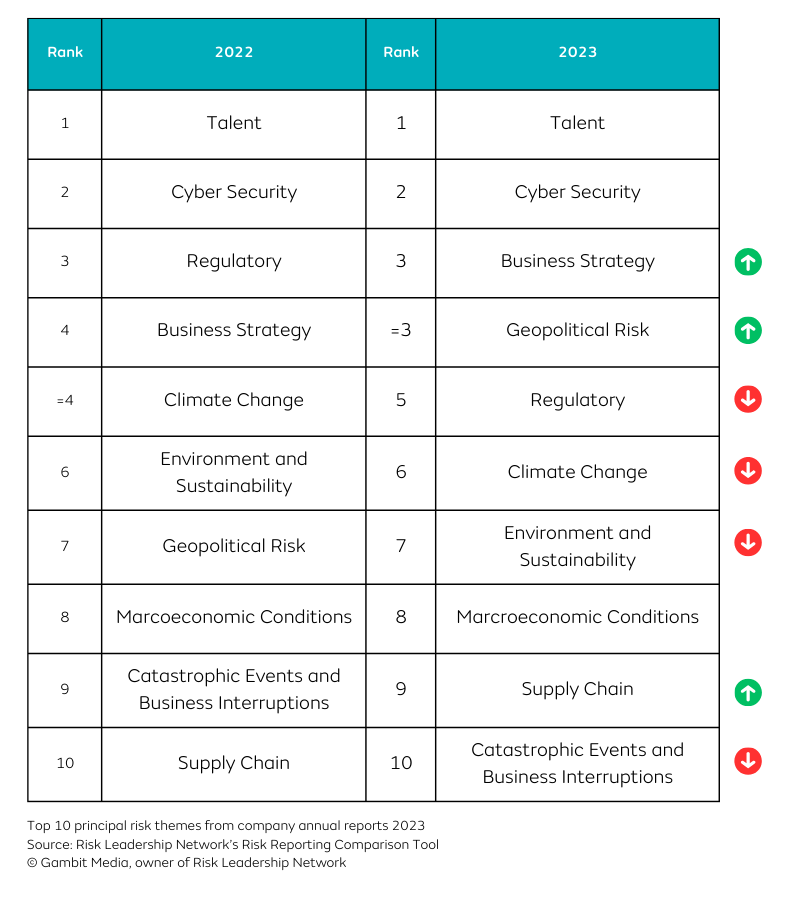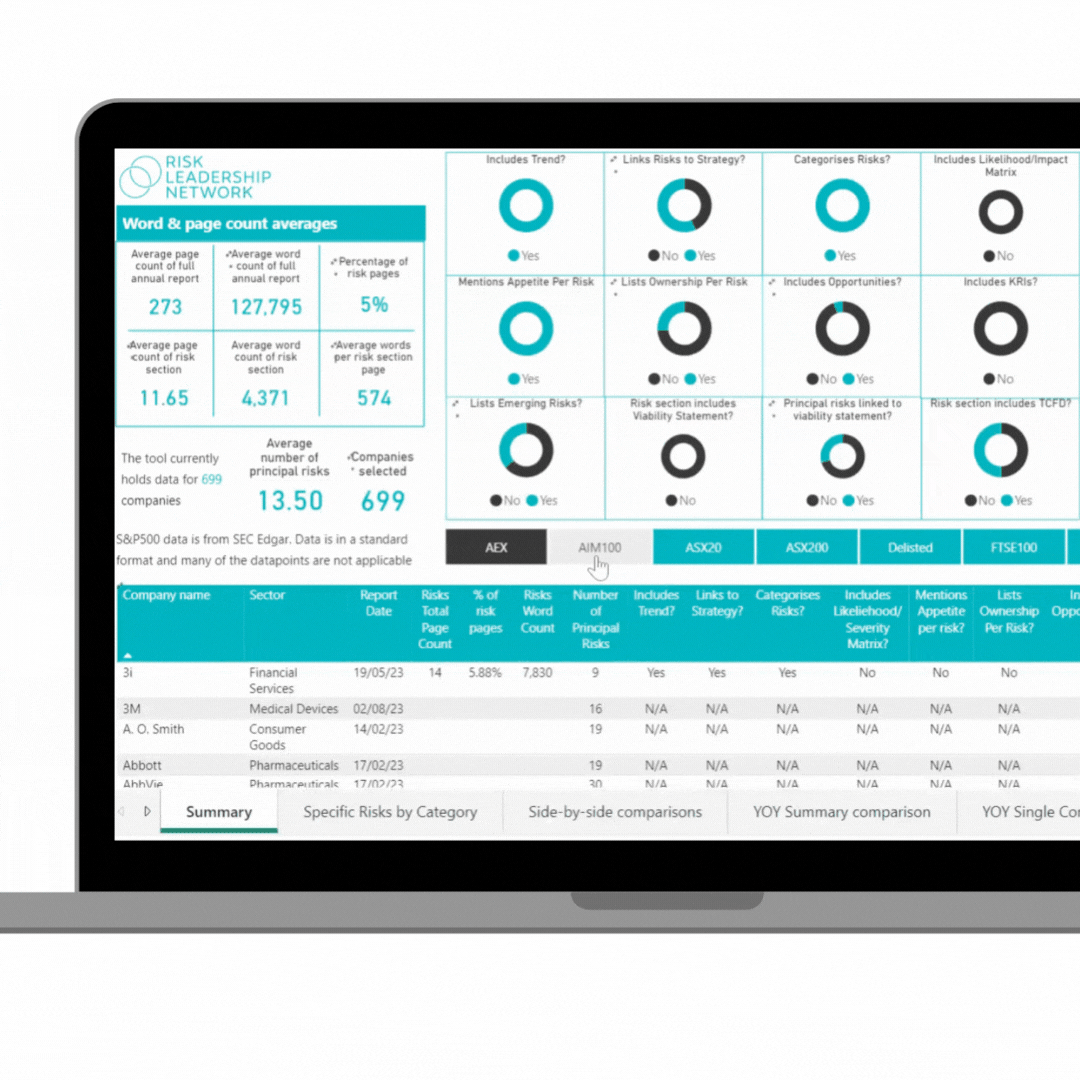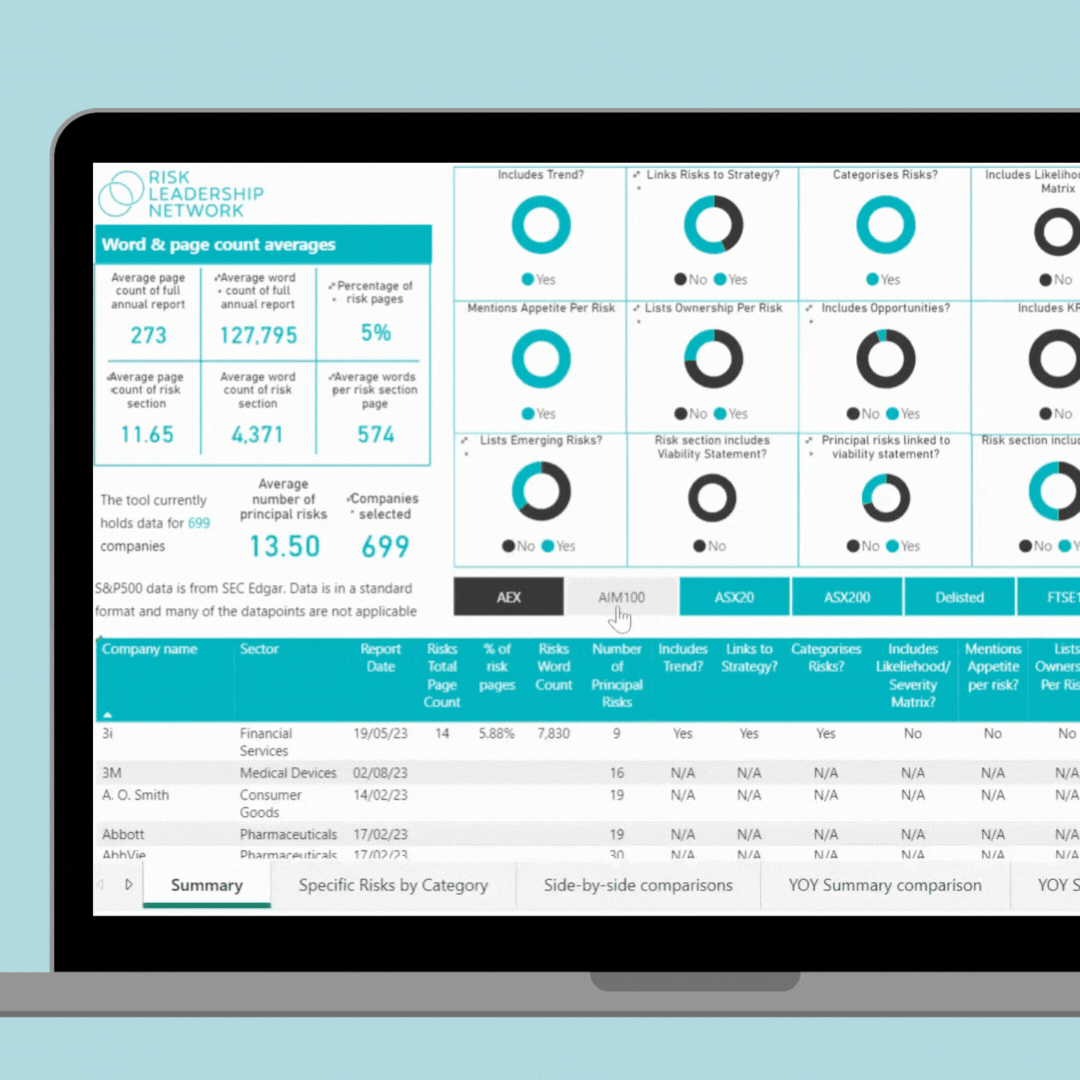External risk reporting: 6 key trends from 2024
Do most companies mention how their principal risks are trending, disclose their risk appetite and list the emerging risks they're monitoring in their external reports? For many, there is an important balance to maintain between meeting obligations and not revealing too much.

While organisations' external risk reports rarely change noticeably year-on-year, data from our Risk Reporting Comparison Tool does highlight some trends across listed companies and their annual reports.
In this article, we highlight common themes between organisations' reporting approaches and explore how the content of risk reports evolved in 2024 among FTSE- and ASX-listed organisations.

1. Risk trends on the rise

87% of FTSE organisations highlight (albeit briefly) how each of their principal risks is trending, up from 81% in 2021.
While the majority of ASX organisations don't include trend detail, this is on the rise, up from 11% in 2021 to 15% in 2024.
They ask: is the risk increasing, decreasing or stable? This is typically represented by arrows or a colour code (e.g. traffic lights) which show the movement of principal risks.
A much smaller percentage of companies, just 26% (31% of FTSE, 4% ASX), include a likelihood-severity matrix in their report.
|
Practitioner view At a recent workshop we facilitated, on annual risk reporting, one risk leader argued that there may be more value in drawing out a narrative about where risks are going, focusing on broader trends instead of details that don't change very often |
2. Increased reporting of appetite per risk

While it is still relatively uncommon for FTSE- and ASX-listed organisations to include risk appetite in their annual report, the proportion of companies reporting this information has steadily increased over the past four years. 29% of FTSE organisations now include this detail (up from 18% in 2021), and we've seen a small percentage of ASX companies introducing this to their annual reports in the last two years.
|
Practitioner view While companies are clearly becoming more open to sharing their risk appetite externally, it remains a point of sensitivity for a lot of organisations. Their concern is that this may send the wrong message about how much risk they want to embrace. To address this challenge, one practitioner in our network is weaving references to "tolerance" into their risk descriptions, as opposed to including an explicit appetite statement for each risk. |

3. More focus on opportunities at ASX organisations

The vast majority of FTSE organisations do not include upside risk or opportunities in their annual report, however, more ASX-listed companies have been adding that detail in 2024.
For most companies though, it seems that there is a risk of giving away competitive advantage if they are too open about the business' opportunities.
|
Practitioner view While the vast majority of companies' annual risk reports are focused on downside risk, some of our members are taking steps to provide a more balanced view of their principal/material risks. For example, a practitioner in our network suggested that they may use more neutral language, where appropriate, to reflect the balanced nature of some risks, without necessarily highlighting specific opportunities. |
4. Fewer companies linking risks to strategy

It's relatively common for companies to connect risk and strategy in their reports, with 60% of FTSE- and ASX-listed organisations including this information. However, there was a 3pp (percentage point) overall drop in 2024, driven by fewer FTSE organisations laying out the links to strategy in their annual reports.
|
Practitioner view One company in our network is dividing the risk section of their annual report into material risks (as standard) and "material matters". These are topics which dovetail what is being discussed by the board, as well as key trends other companies in the same sector are reporting on. |
5. Average number of principal risks decreasing

Since 2021, the average number of principal risks that FTSE-and ASX-listed companies report has fallen. This could be down to consolidation of similar risks, or certain categories of risk, such as pandemic, dropping off the radar.

At the same time, the average size of the risk section is increasing at FTSE organisations, and shrinking in those listed on the ASX.
|
Practitioner view This may be the last year we see the average page count of risk sections increase. A key theme raised by risk leaders in our network is that there is increasing board pressure to make the annual report shorter, without sacrificing any important detail. This is prompting risk leaders to be more concise in their reporting and avoid unnecessary duplication. One approach to the challenge, as shared by a member, is to include more links to other sections and weave narrative about risk throughout the annual report — rather than repeating detail from elsewhere in the risk section. |
6. More organisations are including emerging risks

There has been a significant increase in the percentage of FTSE organisations reporting on emerging risks in their company annual reports. 48% of FTSE organisations now include emerging risks in their company annual reports, up 12pp from 2021.

What next?
This data comes from Risk Leadership Network's Risk Reporting Comparison Tool, an AI-powered data platform that collects trends from the risk sections of company annual reports. Created and updated to support our members who wanted to save time validating their external reporting, the tool is now available to all Risk Leadership Network members. Find out more about the tool and membership here.
A priority for risk leaders is engaging stakeholders and challenging the perception that annual risk reporting is solely the remit of the risk management team.
In this interest, a number of companies have established either a steering committee or working group to lead annual reporting, typically convening key stakeholders from different parts of the organisation (including risk management).
If you would like to collaborate with your peers on the topic of annual risk reporting, or find out how we could support you with a specific challenge you're facing, please book an introductory call.
Share this
Related posts you may be interested in

Top 10 principal/material risks of 2024

Top 10 emerging risks of 2024
